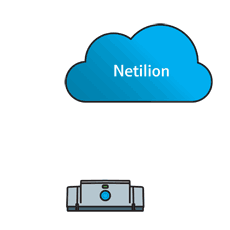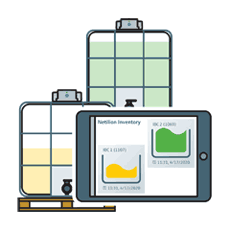Read this article before buying a sensor for remote level monitoring
Remote level monitoring presents plenty of challenges, from installation to configuration and more. Today’s IIoT radar sensors bring a solid list of benefits to remote applications, so you can get remote access and efficient level monitoring wherever you are. Come on in to learn more!
Finding the right sensor for a remote level monitoring application can be a tricky task. Believe me, I know. The market is stuffed with a wide variety of technologies and brands. I also know that even though level measurement is not rocket science, the wrong choice can give you tons of different headaches.
Each application has its particularities, and you need to have all the details laid out to find the right level sensor. Beyond that, it has to integrate with a control system or at least give you access to its history as well as its current data.
Today we’ll demystify the process of scaling out a good level transmitter for your remote level monitoring. Let's dive into some basic and advanced information on this topic.
Types of remote level monitoring
Remote applications can use the same sensors as standard control applications, but the installed structure might cause headaches. You can locate wireless level sensors all over the internet that use different working principles and communication tech, like these:
- Ultrasonic level transmitter
- Float level switch
- Capacitance level switch
- Radar level transmitter
As always, all options have pros and cons, so you’ll need to analyze your application to see which fits best. Still, one of these options can work in many application types to offer reliable measurement with many digital features.
So let’s discuss the benefits of IIoT radar level devices and how nice it is to have an affordable high-end choice for level monitoring.
The difference between monitoring and control
Most monitoring solutions have what we call an open loop. It means the field sensor responsible for measuring the process value sends its data to the supervision software or control system, which displays and stores this data. A monitoring application has no set point or command of a final element, such as a control valve, to run a control loop.
A control application also has a field sensor measuring and sending data to the system, but here the system has a set point for the application. It compares the process value against the set point and acts with a final element to correct the process value if necessary.
The final element can be a valve, pump, or other such instrument to act directly on the process, increasing or decreasing the value until it reaches the set point.
A monitoring application has a lower level of complexity than a control application. In a monitoring solution, you must measure the process value regularly and store this data. You’ll often find thresholds for minimum and maximum values in the application as well.
What are the challenges in remote level monitoring?
For instance, take an IBC level monitoring application, where the containers are always moving from Point A to Point B, and the location has no local control. Here are four relevant challenges to consider when you want to find the best remote level monitoring in this case.
Value
For monitoring applications, most users want a cheap solution because it's just monitoring. But in most cases, they’re controlling raw materials and consumables, directly affecting the numbers.
If your cheap choice lacks accuracy, you’ll probably regret it. Instead, consider the new low-budget radar level transmitter. It brings high accuracy to monitoring applications at an affordable price, making it a solid option to implement.
Power supply
In applications where IBC tanks are always moving, you’ll want a battery-powered level sensor. It’ll save you time, money, and hassle over cables or other such installation structures.
But that makes battery life a critical point. As a user, you don't want to change the battery every week, do you? A balance between battery life and update rate is essential in this type of application, and new IIoT radars on the market can provide this benefit.
Remote communication
What if you find out that someone set up the device incorrectly, but the device is far away from you? Don’t scoff; it could happen. The ability to set the device up anywhere at any time is critical to remote monitoring.

The new IIoT level sensors offer straightforward setup and monitoring of your field devices, wherever they’re installed. Using connectivity such as NB-IoT, LTE-M, or 2G, you can access and set up your devices remotely. Pretty neat, huh?
Data collection
Remote applications without control-system connections usually have a standalone application implemented. Today, we live in the cloud era, where it's simpler and more efficient to apply a cloud-based solution, so you can get access to all the process values and setups, then integrate them into other solutions.

For instance, Netilion Value and Netilion Inventory are outstanding services that work together with the Micropilot FWR30, an IIoT radar sensor. Netilion offers an excellent user interface on desktop and mobile and an optimized user experience, for smooth sailing.
Why should I use IIoT radar devices?
On the market, you can find a variety of working principles and standalones. IIoT radar sensors bring high-level technology to all kinds of applications, making them affordable and easy to implement.
On top of that, IIoT radar devices provide solid reliability, high accuracy, and stable measurements. It’s a pretty easy choice in most cases; IIoT radar with a cloud-based service is a state-of-the-art solution for a remote level application.
If you learned something useful from this article, please share it with your colleagues on social media using the #Netilion tag.
Stay safe, and have a good one!



